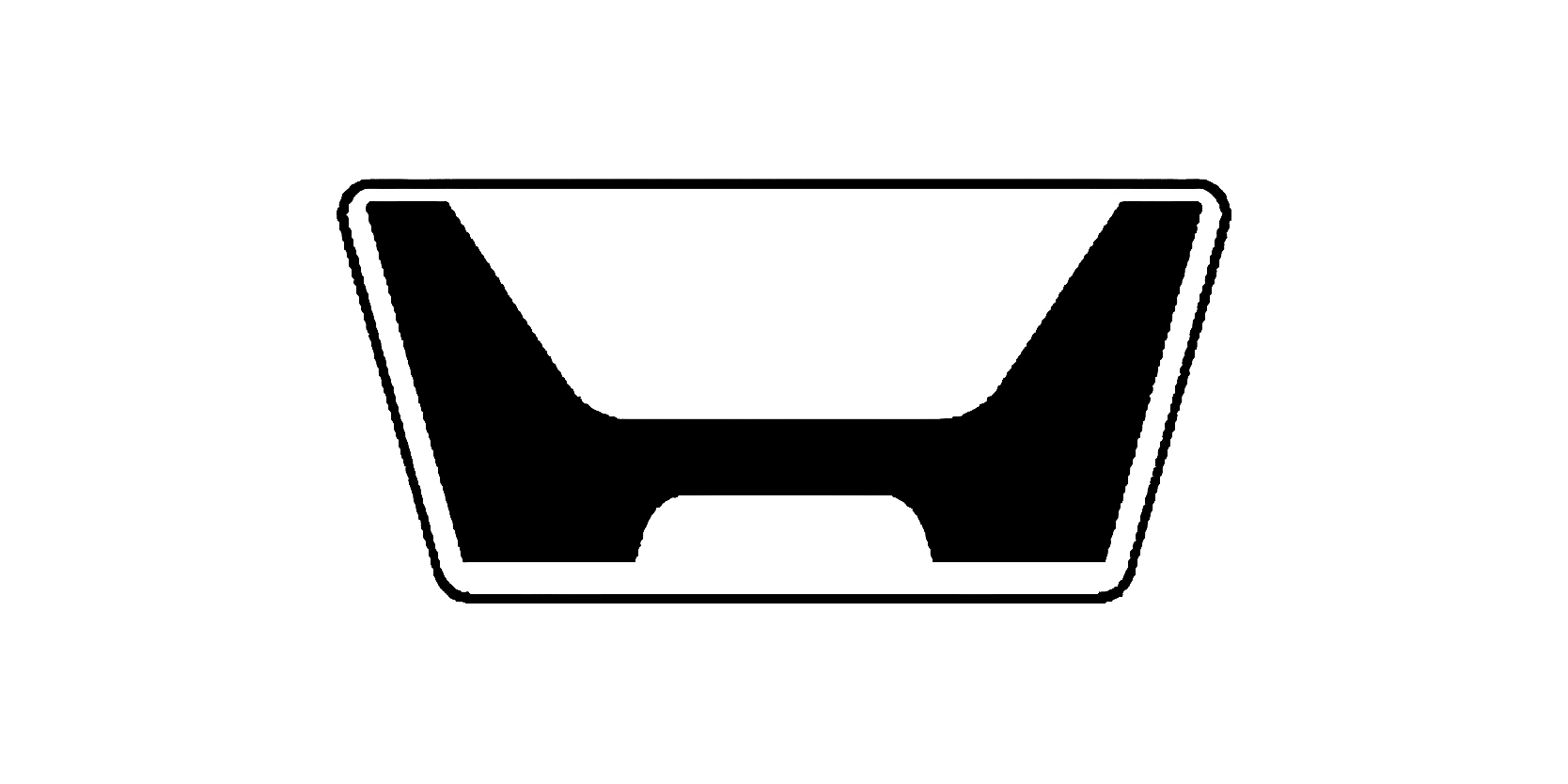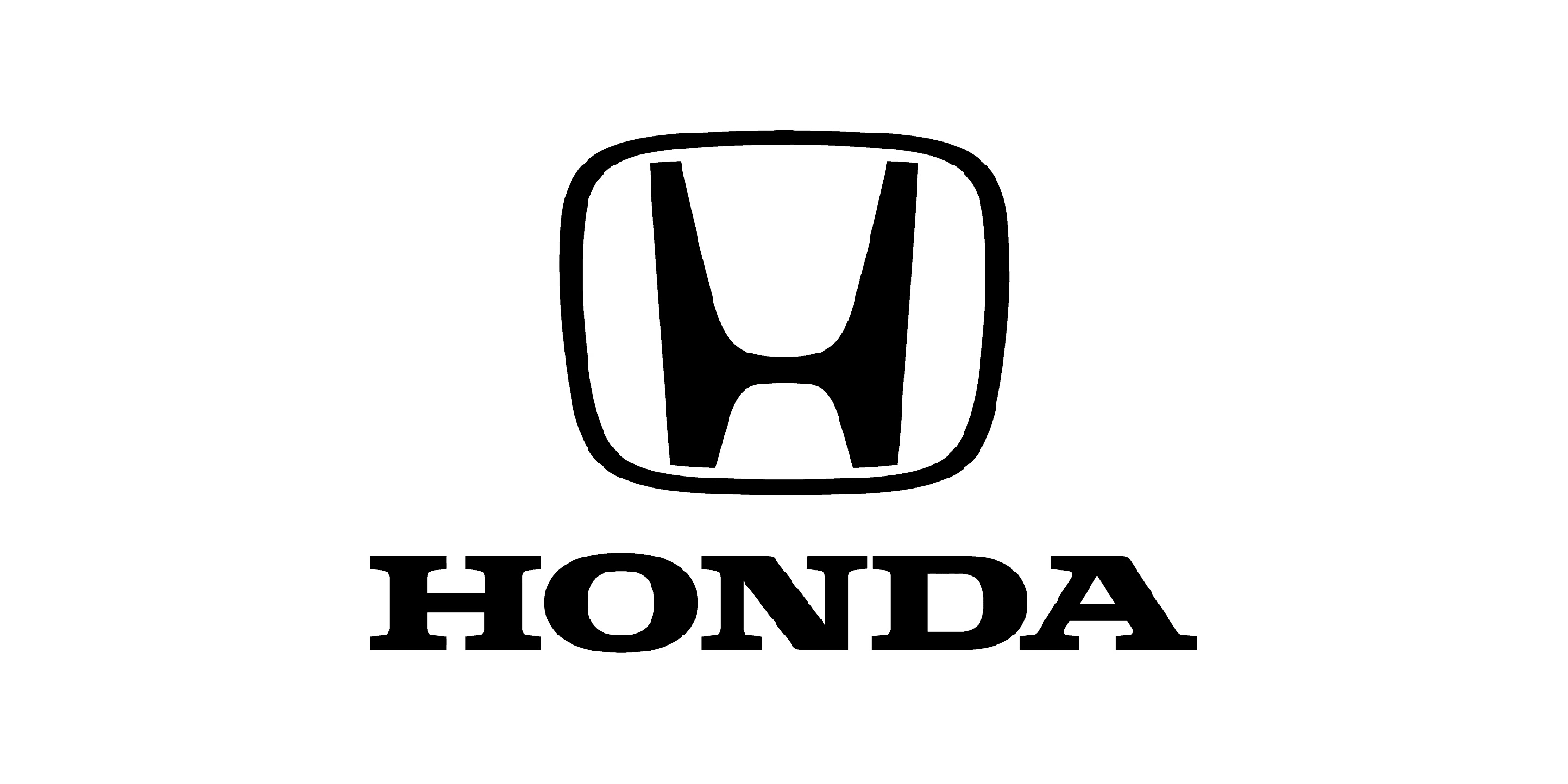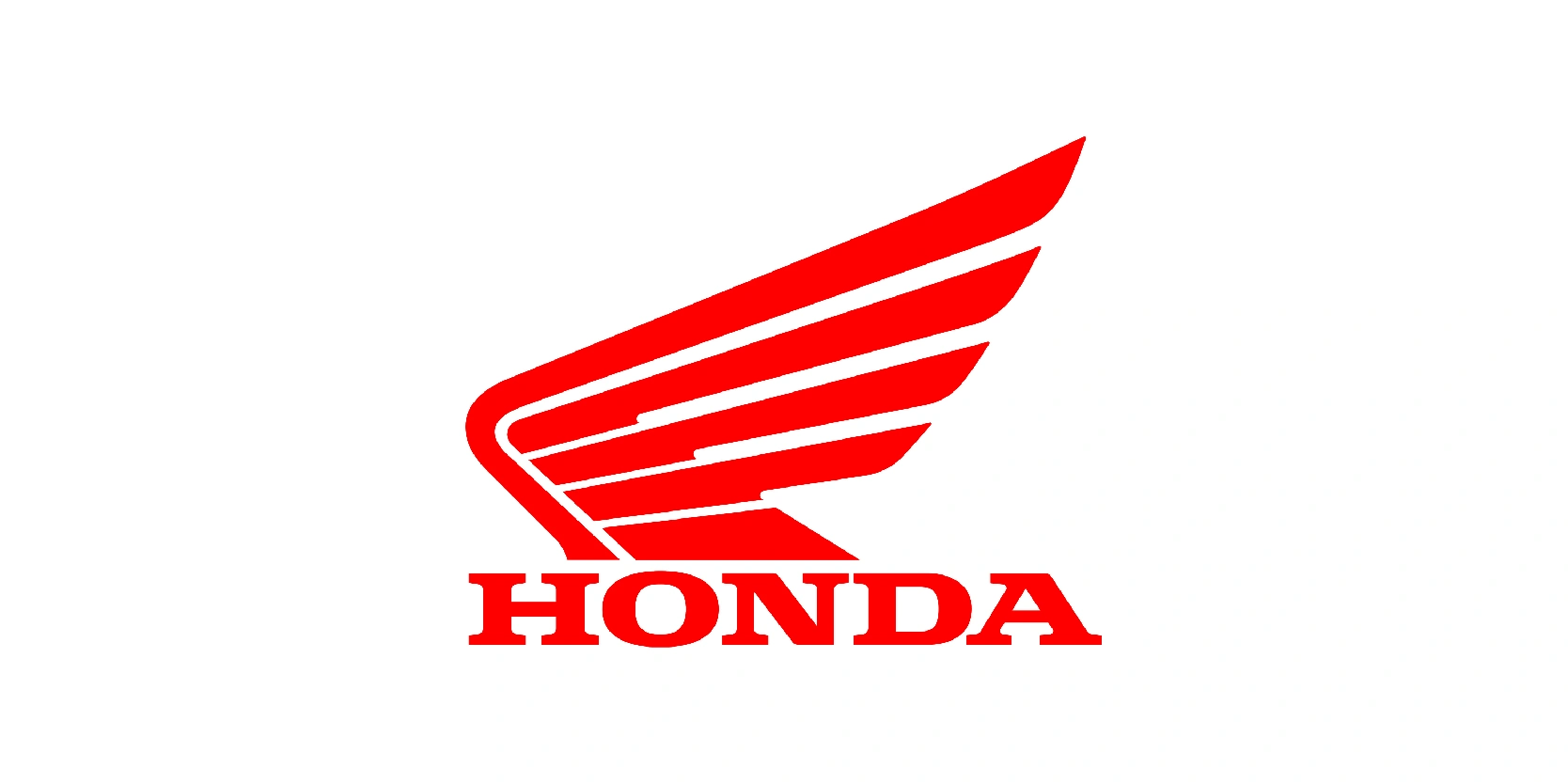The logo design history of Honda reflects the brand’s journey from a small motorcycle manufacturer to a globally recognized automotive giant. Over the decades, Honda has carefully refined its emblem to mirror its values of innovation, reliability, and forward-thinking design.
From its earliest, modest logo to the sleek and modern version we see today, each update represents a step in the company’s evolution and growing reputation.
In this article, we’ll dive deeper into learning more about the logo design history of Honda and we can learn from it.
The debut of a legend: 1961-1969

The Honda logo used between 1961 and 1969 marked one of the company’s first steps toward building a strong and lasting brand identity. Unlike the modern sleek “H” emblem, this version had a bolder and more experimental design. The thick, geometric letter “H” sat within a trapezoid-shaped frame, giving the logo a sense of balance and strength.
Its sharp lines and wide stance symbolized stability, dependability, and the company’s growing confidence during its early years in the automotive and motorcycle markets.
While the design was minimalist in nature, it conveyed authority and presence, making it suitable for a brand aiming to establish itself on the global stage.
Although later replaced by a more refined version, this logo laid the foundation for Honda’s enduring identity, emphasizing both functionality and forward-thinking design.
Minor refinements: 1969-1981

The first major update on the Honda logo 1969-1981 introduced a more refined and recognizable look, setting the stage for the brand’s long-term visual identity. During this period, Honda adopted a sleeker version of the “H” emblem, framed inside a rectangular shape with rounded edges.
The letter itself was elongated and narrower compared to earlier designs, giving it a more elegant and sophisticated appearance. This update reflected Honda’s growth from a motorcycle producer into a global automotive powerhouse, signaling reliability and modernity.
The cleaner lines and more balanced proportions made the logo versatile and easily adaptable across vehicles, motorcycles, and marketing materials. By moving toward a simpler yet timeless design, Honda strengthened its brand recognition, making sure the emblem could stand confidently alongside other major car manufacturers of the era. This version became an important step toward the enduring logo we know today.
Modernization: 1981-2000

Honda’s logo, shown in the image above, represents the brand’s identity from 1981 to 2000. The design is simple yet powerful, featuring a bold, uppercase “HONDA” wordmark paired with recognizable “H” emblem enclosed in a squared frame with rounded edges.
The stylized “H” is elongated, symbolizing stability, reliability, and forward movement, values closely tied to Honda’s reputation as a global automobile and motorcycle manufacturer. The clean black-and-white color scheme enhances its professional and timeless look, reflecting strength and trustworthiness.
During this period, Honda was experiencing significant growth and establishing itself as a leader in both the automotive and motorcycle industries. The logo captured the essence of modernity while remaining minimalistic, making it instantly recognizable worldwide.
This version stood as a mark of quality engineering and innovation, representing Honda’s commitment to performance, efficiency, and durability across its wide range of vehicles.
Modern-day Honda: 2000-2024

This version of Honda’s logo, used from 2000 to 2024, represents a refined and modernized evolution of the company’s identity. The emblem features the signature “H” enclosed within a rounded square, but with sleeker lines and a more elongated design compared to earlier versions.
The wider stance of the “H” conveys strength, stability, and forward-thinking innovation, aligning with Honda’s reputation as a brand that balances performance, efficiency, and reliability.
Beneath the emblem, the bold, uppercase “HONDA” wordmark remains, reinforcing the brand’s authority and global recognition. The simplicity of the black-and-white scheme ensures timelessness, while the cleaner shapes reflect the company’s transition into the 21st century, highlighting its focus on tech advancement and sustainable mobility.
This version of the logo became iconic worldwide ,symbolizing Honda’s growth into a leader not only in automobiles and motorcycles but also in power equipment, robotics, and renewable energy solutions.
Current logo: 2024-present

The present version of Honda’s logo represents a bold step toward modern minimalism and brand evolution. Unlike previous iterations, this design removes the enclosing square and the wordmark, leaving only the stylized “H” as the central identity symbol. The emblem is wider, sharper, and more dynamic, emphasizing a sense of innovation, progress, and cutting-edge design.
Its strong, clean lines highlight Honda’s vision for the future, particularly as the company moves further into electric vehicles, sustainable technologies, and next-gen mobility solutions. By simplifying the design, Honda ensures instant recognition while reflecting contemporary branding trends that favor sleekness and clarity.
The absence of extra elements reinforces confidence in the brand’s global recognition and heritage, proving that the “H” alone is powerful enough to stand as its signature. This present logo symbolizes not just Honda’s legacy of reliability but also its bold move toward a forward-looking, technology-driven era.
Honda’s motorcycle logo: 1988-present

This is Honda’s motorcycle logo from 1988 to present, commonly known as the Honda Wing logo. The design features a bold red wing paired with the word HONDA written in a strong, block serif typeface. The wing represents speed, freedom, and ambition, key values associated with motorcycles.
Its sharp, upward-tilted shape suggests motion and progress, aligning perfectly with Honda’s image as a forward-thinking and innovative brand. The color red stands for energy, passion, and excitement, reflecting the spirit of riding and the adrenaline rush that motorcycles provide.
The use of capital letters for the brand name adds strength, reliability, and confidence. This emblem has become one of the most recognizable motorcycle logos worldwide, symbolizing Honda’s commitment to performance, quality engineering, and the joy of riding.
After all, Honda was initially known as a motorcycle company, so this later helped them turn their artwork logo designs of motorcycles to cars and so much more.
Honda’s electric logo: 2025-present

The new Honda “H” logo introduced for its 2025-present line of electric vehicles, an emblem exclusively crafted for the upcoming all-electric “0 Series’ models. This refreshed design presents a much slimmer, borderless “H” that departs from the iconic squire frame used since 1981.
Honda describes the widened, sans-bordered “H” as resembling two outstretched hands, symbolizing the brand’s commitment to expand the possibilities of mobility and directly serve the evolving needs of EV users.
The simplified style also intentionally nods to Honda’s original 1960s insignia, bringing a sense of nostalgia through a modern lens. This logo premiered alongside the futuristic Saloon and Space-Hub concept vehicles at CES 2025 and will be featured on production models of the “0 Series” EVs launching from 2026 onward. It embodies Honda’s Thin, Light, and Wise design ethos, marking both a visual and strategic shift as the company steers into an electrified future.
Future directions of Honda
Honda’s future direction reflects a balance between innovation and market realities. By prioritizing hybrids as a transitional technology, the company ensures steady growth and customer accessibility while gradually scaling its EV portfolio through the 0 Series and region-specific models.
At the same time, Honda is investing heavily in intelligent mobility, advanced safety systems, and flexible production to remain resilient in a rapidly shifting industry. Strategic collaborations, such as the Sony Honda Mobility venture, further demonstrate its willingness to adapt and explore new opportunities.
Ultimately, Honda’s path forward is not about rushing into electrification at all costs but about building a sustainable, profitable, and human-centered mobility future, one that honors its legacy of reliability while embracing the digital, electric, and connected era.
